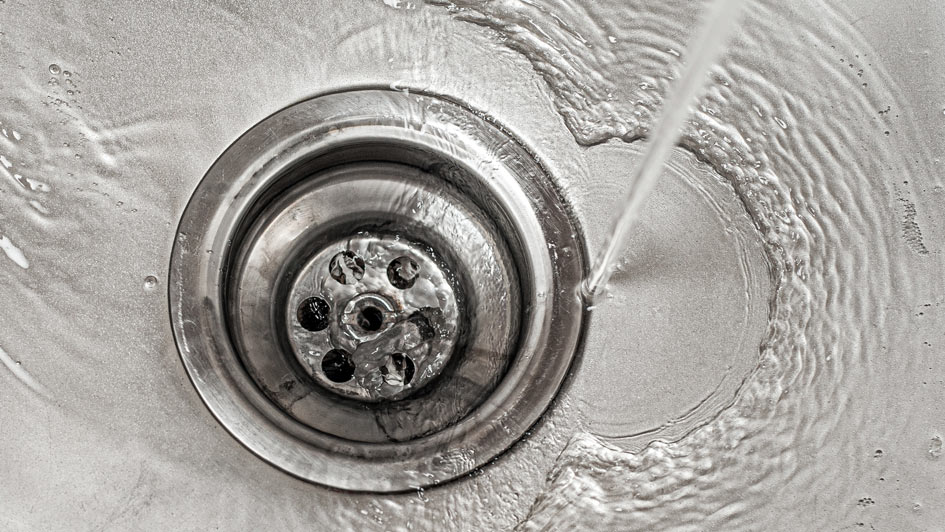
Backed-up sinks. Discolored water. Leaks. These things may sound frightening, but the truth is they’re typical problems in many homes. In fact, lots of them can be repaired with just a few easy steps.
With the correct tools and skills, you can save yourself time—and money—by dealing with these issues yourself. Plus, learning more about how to take care of common problems will help you know when the issue is more complicated and best solved by a professional.
So, don't let a clogged drain or a leaky faucet get you down—with the right know-how, it's easy to sort out common plumbing problems all by yourself. We’ll take a look at a few frequent plumbing problems and how you can resolve them.
1. Why Is My Sink Gurgling?
If you’re concerned by a gurgling sound coming from your sink, it may be the result of of air or water trapped in the pipes. This can happen if there is a blockage in the pipes, or if a plumbing vent has become plugged or disconnected.
Fortunately, this issue is relatively easy to solve:
- First, try using a plunger to clear any blockages that may be generating the gurgling sound.
- If a plunger does not work, you can try using a drain snake to clean out particles from the pipe. Lastly, if your plumbing vent is blocked or disconnected, make sure to reconnect it and search for any other barriers.
If you’re still having trouble, it may be best to call an experienced plumber in Mankato area. They can help determine the reason you are having the issue and provide you with skilled repair service.
2. Why Is My Sink Not Draining?
If a sink is just not draining, generally that’s a result of something blocking the drainpipe. However, it could also be an indicator of a much larger concern with your plumbing system.
Common reasons why the water in your sink won’t drain:
- Blocked or clogged pipes: Gradually, hair, food scraps, grease, animal fats and other materials can collect in the pipes, producing a blockage that prevents the water from draining.
- Broken seals: If the sink’s rubber seals are cracked or busted, they may not be producing an effective seal around the drain to keep out air and allow the water to drain.
- Crud in the trap: The curved pipe beneath the sink, called a P-trap, can become blocked with debris or form leaks which restrict it from draining properly.
- Blocked vent pipe: An obstruction in a vent pipe, which allows gas to leave your plumbing system, might stop your sink from draining. Vents can be blocked by debris where they leave your residence.
To clear a pipe, try using a plunger to move the clog through the line. If that doesn’t work, give some thought to using a plumbing snake to retrieve and pull out hair or other debris and allow the water to move through. Other methods are to use baking soda and vinegar or a drain-cleaning product to disintegrate the clog.
Depending on your plumbing setup, you may have the ability to check for a blockage in the P-trap, which is a bend in the pipe underneath your sink. This is done by dismantling the pipe and clearing the line. To do this, first shut the faucet off and put a bucket below the bend. Then, take the pipe apart and extract any debris. Once it’s clear, put the pipe back together and rinse with hot water.
If trying to clear the line and P-trap doesn’t work, inspect where your drain vent comes out of your house to make sure it isn’t blocked by debris such as leaves, dirt or even a nest by an misguided bird or another critter. If this also doesn’t work, you may want to get in touch with a knowledgeable professional for plumbing repair in Mankato area to make sure there isn’t a bigger problem with your plumbing.
3. Why Is the Water from My Sink So Cloudy?
In general, cloudy or white-looking water is caused by air bubbles in the water. This is usually harmless and can often clear up on its own. It may be the result of a water company doing work on the lines, or a close-by construction project.
One way to determine if cloudy water is created by air bubbles is to fill a glass of water and then leave it on the countertop. It’s likely that the air bubbles will escape and the water will eventually go back to being clear. If the water is still cloudy after 24 hours, you may have another predicament and will want to check with a professional for assistance.
The off-colored water also could be caused by high levels of minerals in the water in your home. Excessive minerals build up until they impact the water’s appearance and taste, in which case a water softener may help. It can counter hard-water buildup from harming your pipes and creating the distasteful cloudy water.
If cloudy water ends up being a reoccuring problem, consider washing out the aerator, which is a screen at the end of your faucet. Use a water and vinegar mixture to eliminate any debris or accumulation. If that doesn’t work either, you probably will want to consult a certified plumber and let them find a solution.
4. Why Won't My Sink Stop Leaking?
The reason for a leak or water drip underneath a sink is often because a plumbing fixture has broken down or malfunctioned. Sometimes, it’s caused by a clog blocking the line.
Here are a few of the more typical causes of sink leaks and how you can resolve them:
- Loose Connections: One of the most frequent causes of a puddle of water underneath the sink is due to loose connections between pipes, fixtures and hoses. If any fixture has not been securely tightened, or if it was not sealed all the way in its fitting, water can quickly escape from these weak spots.
- Worn-Out Washers: Over time, the washer in a sink fixture can become worn out and fail to create an adequate seal. If you notice water seeping from the sides of the handle or base of the faucet, there's a good chance that a new washer is needed.
- Corroded Pipes: The pipes underneath a sink can wear down over time, leading to weakening and cracks. Corrosion is especially common when working with older or lower-cost materials, so it's important to look for any indications of degradation in order to avoid a major leak.
- Clogged Drains: A clogged drain can cause water to back up and start dripping from the seal. It's important to check for any evidence of blockage and to clear away any debris that may be inhibiting water flow.
5. Why Is the Water from My Sink Discolored?
The most common reason for brown tap water is rust. Rust in most cases comes from high levels of iron in the water, which can be the result of corroded pipes or worn-out fixtures. Rust may also show up when sediment accumulates. Buildup may appear if the filtration system is failing or there are elevated levels of minerals like manganese.
Sometimes, the water can be muddied from silt or clay particles that have been stirred up from work on the water line or your plumbing. If you purchase your water from a municipal utility company, get in touch with them to tell them about the discoloration. They will hopefully be able to tell you if there has been any recent activity on the water lines.
An experienced plumber in Mankato area can help you figure out if the discoloration is originating from a rusting pipe that needs to be replaced, or if a filtration system may get rid of the unsightly problem.
6. Why Did My Sink's Drainage Slow Down?
The most common cause for a sink to drain slow is a partial obstruction in the pipes. Hair and soap residue are likely culprits for a clogged bathroom sink, while food scraps and grease—along with soap scum—often are at fault for kitchen sink clogs.
Three ways you can fix a clogged sink include:
- Plunger: One way to eliminate a partial clog is using a plunger. If you don't see any standing water in the sink, allow it to fill with enough water to cover the drain. Then, use the plunger to try to dislodge the clog.
- Plumbing snake/weasel: If a plunger doesn’t fix the problem, you may have to use a plumbing snake—a long, thin piece of plastic—to put down your pipe to attach to the clog so you can extract it manually. Sometimes, these are called plumbing weasels.
- Chemical Clog Remover: Multiple chemical clog removers are available to break up blockages in sink pipes. Be certain to follow all directions, and that the remover won’t damage your home’s pipes or the basin in your sink.


